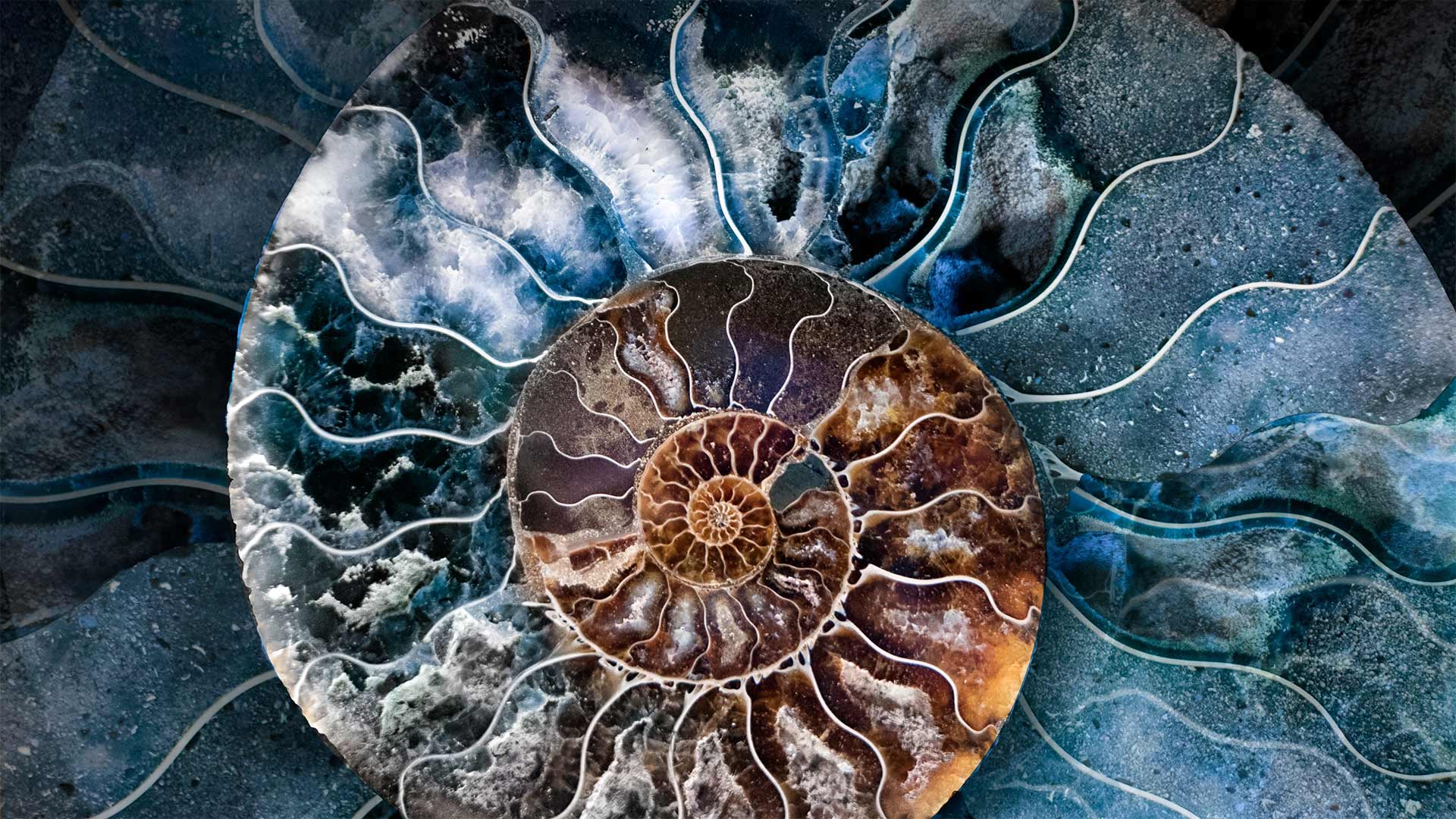菊石亚纲壳体的横截面 Cross-section of a fossilized ammonite shell (© Marianna Armata/Getty Images)

菊石亚纲壳体的横截面 Cross-section of a fossilized ammonite shell (© Marianna Armata/Getty Images)
Fibonacci Day
It's a bit of a fib that Fibonacci, the 13th-century Italian math whiz, was the first to sketch out a number sequence by adding each number to the preceding number: 1, 1, 2, 3, 5, 8, 13, and so on forever. In fact, Hindu scholars described the sequence centuries before Fibonacci, and they probably weren't the first to figure it out either. But in any case, each November 23—that is, 11/23—we celebrate the infinite series known as the Fibonacci sequence.
What is clear—maybe, if you can picture it: If you properly arrange squares of the areas 1x1, 1x1, 2x2, 3x3, 5x5, 8x8, etc., on graphing paper, a curved line drawn through each square will form a perfect expanding spiral not unlike the ammonite fossil cross-sectioned here. Not every spiral in nature expresses a perfect Fibonacci sequence, but nature does seem to have a thing for spirals. And in that sense the Fibonacci sequence seems especially elegant.
斐波那契日
13世纪的意大利数学天才斐波那契,是第一个通过把每个数字加在前面的数字上来勾勒出一个数字序列的人:1,1,2,3,5,8,13,等等。事实上,印度教学者在斐波那契之前几个世纪就已经描述了这个序列,他们可能也不是第一个发现这个序列的人。但在任何情况下,每年11月23日,也就是11月23日,我们都庆祝被称为斐波那契数列的无限级数。
如果你能想象的话,可能有一点是清楚的:如果你在绘图纸上正确地排列1x1、1x1、2x2、3x3、5x5、8x8等区域的正方形,通过每个正方形绘制的曲线将形成一个完美的膨胀螺旋,这与这里的菊石化石横截面不同。并不是自然界中的每一条螺旋都表达了一个完美的斐波那契数列,但自然界似乎确实有一个螺旋的东西。从这个意义上说,斐波那契数列似乎特别优雅。
评论已关闭